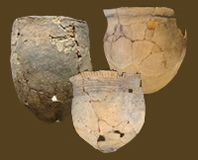The appearance of ceramic technology around 1000 B.C. is considered to be the marker for the beginning of the Woodland Period in Maryland. The earliest pottery was a flat-bottomed ware, tempered with crushed steatite. These vessels were oblong or semi- rectangular, with straight walls and lug handles that resembled the carved stone steatite bowls. Soon after and contemporaneous with these bowls, coil-constructed pottery was made. The Early Woodland was a period of ceramic technology experimentation with tempering agents and manufacturing methods.
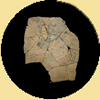
|
Marcey Creek:
Marcey Creek is an Early Woodland ware characterized by crushed steatite temper, rough and unevenly smoothed exterior and interior surfaces. Vessels have a flat net- or fabric-impressed base with a protruding heel and vertical walls. |
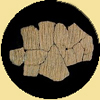
|
Accokeek:
Accokeek is an Early Woodland ware that is sand-tempered or crushed quartz-tempered with cord-marked exterior surfaces. This pottery is often identifiable by the pronounced oblique cord-marking, slanting to the right from the vessel rim. |

|
Dames Quarter:
Dames Quarter is an Early Woodland ware characterized by crushed black rock (hornblende) or gneiss temper, with roughly smoothed exterior surfaces. This pottery is similar to Marcey Creek in appearance and manufacture.
|
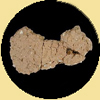
|
Wolfe Neck:
Wolfe Neck is an Early Woodland ware, characterized by a crushed quartz temper, and cord-marked or net-impressed exteriors. Defined types include Wolfe Neck Net-Impressed and Wolfe Neck Cord-Marked.
|

|
Selden Island:
Selden Island is an Early Woodland ware characterized by steatite temper and a cord-marked exterior.
Stratigraphic sequences and radiometric dating indicate
that Selden Island dates from ca. 1000 B.C. – 750 B.C. |

|
Popes Creek:
Popes Creek is a late Early Woodland – early Middle Woodland ware that is thick, friable and heavily sand-tempered. The exterior is nearly always net-impressed though rarely it is cord-marked. Interior surfaces often show distinctive scoring. |
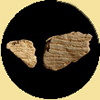
|
Vinette:
Vinette is an Early to Middle Woodland ware, characterized by crushed rock temper, cord-marked exterior and interior surfaces, and a conoidal shape. It is named for the Vinette site in New York, and is tied to various cultures of the Northeast. The ware includes two types: Vinette I, and Vinette 2 dentate stamped variants.
|
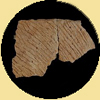
|
Coulbourn:
Coulbourn is a late Early to early Middle Woodland ware, characterized by a temper of clay nodules or fragments, and cord-marked or net- impressed exterior surface treatments. Defined types include Coulbourn Cord-Marked and Coulbourn Net-Impressed.
|

